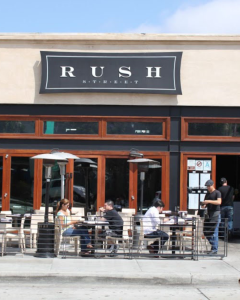 Adaptive reuse, the practice of repurposing old structures for new uses, is becoming more popular. This practice allows historic properties to meet needs while preserving history and reducing the environmental impact of tearing down properties and building new ones. Whether it’s converting a factory into loft apartments or turning a historic building into a vibrant restaurant, adaptive reuse is reshaping the urban landscape.
Adaptive reuse, the practice of repurposing old structures for new uses, is becoming more popular. This practice allows historic properties to meet needs while preserving history and reducing the environmental impact of tearing down properties and building new ones. Whether it’s converting a factory into loft apartments or turning a historic building into a vibrant restaurant, adaptive reuse is reshaping the urban landscape.
Two famous examples in New York City’s Brooklyn neighborhood highlight how adaptive reuse projects can change the landscape of historic areas. In the early 19th century, the area was renowned for industrial storage, especially during World War I and II. Now, some of the historic storage areas are being transformed. The U.S. Bush Terminal, 16 building complex once used for storage as one of the largest multi-tenant industrial areas in the country, is being redeveloped into office and retail spaces. It will even include a rooftop training center for the Brooklyn Nets. Similarly, the Brooklyn Navy Yard, Building 77, a 17-story building, was originally a windowless storage facility before World War II. Now, it’s being remodeled into an office, entertainment, and restaurant space while maintaining a historical connection to the previous building design. These spaces have moved from historical industrial use to office- and city-centered designs and are transforming the community.
These incredible projects in New York City and others worldwide highlight the unique way that adaptive reuse principles can maintain the historic value of buildings and properties while adapting them for new uses. Adaptive reuse breathes new life into historic structures and is a great way to blend past design trends with new modern ones.
Benefits of adaptive reuse
- Sustainability: The goal of an adaptive reuse project is to incorporate past materials into the new design. This process reduces building waste and minimizes the project’s environmental footprint.
- Cost-effectiveness: Structural retrofitting is a complex process, but it usually involves less material and labor, so it can be less expensive than building new.
- Historical preservation: Adaptive reuse allows historic architectural features and cultural history to be preserved and used in new ways. This process opens up access to the community and can help revitalize neighborhoods.
- Improved code compliance: Another benefit of adaptive reuse is upgrading older buildings to modern safety and building codes, which makes them safer.
Key engineering considerations of adaptive reuse
As an engineering firm, we love seeing adaptive reuse projects progress. They’re an innovative, sustainable, and cost-effective way to transform a space. Engineers are a vital part of this process and provide critical services like:
- Site investigation and structural analysis: Before a building can be retrofitted for a new purpose, engineers must assess its current structural condition. This process typically involves checking historical records and evaluating the building’s condition.
- Seismic and safety upgrades: In high-risk seismic areas, engineers must ensure that the building meets current seismic standards. Typically, foundation, wall and other structural reinforcements are required to meet higher seismic standards.
- Design adaptations: Shifting a building from one use to another requires creative design plans to meet the new building’s purpose. Engineers often help create an effective design that incorporates the new needs with historic elements.
- Meeting updated building codes: As a building is repurposed for new uses, additional upgrades may be needed to meet modern fire, safety, energy, and building codes.
Project Spotlight: Rush Street Restuarant
Even small adaptive reuse projects can preserve a historic space and revitalize an area. We had the opportunity to work on such a project in Los Angeles, CA, where we helped transform a 75-year-old sign and welding shop into a high-end restaurant called Rush Street. This project was an excellent test of our skills. We started with an entire site investigation survey on the existing building. There were no existing records of the structure available to work from, so we had our work cut out for us. However, our team was able to perform a complete structural analysis and recommend retrofits so the building would meet the current California and Los Angeles building code requirements. Even with a limited budget, we moved the project forward for its new purpose as a restaurant, which involved changing occupancy and adding a new mezzanine to the design. The historic building remains, but it serves a new purpose as a popular restaurant in the neighborhood.
The future of adaptive re-use
As buildings age and communities change over time, adaptive reuse can be a great way to encourage sustainable development. This trend is a sustainable and creative approach to modern development. As more old buildings are repurposed for new uses, the environmental impact of new construction is reduced, architectural history is honored, and communities are revitalized. As the demand for sustainable design grows, adaptive reuse projects will continue to become more popular. We’re excited to help shape this architectural trend and help old properties become new in exciting ways!








